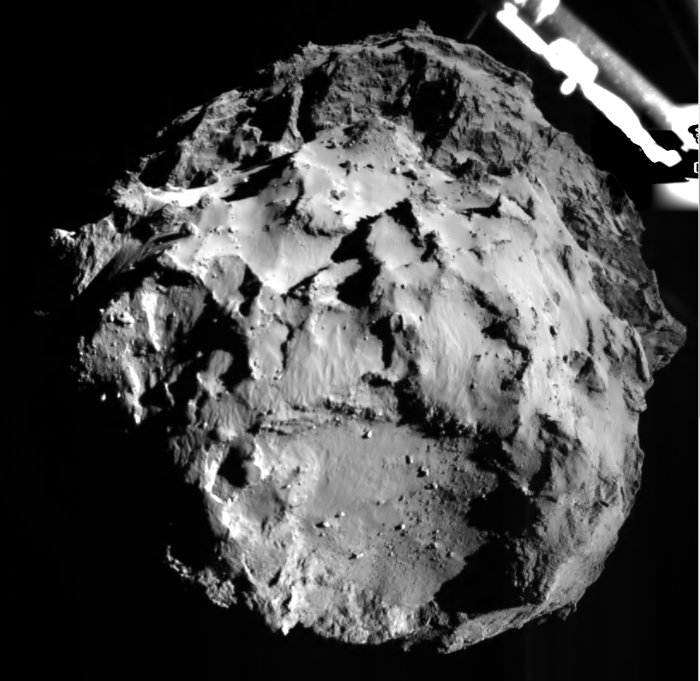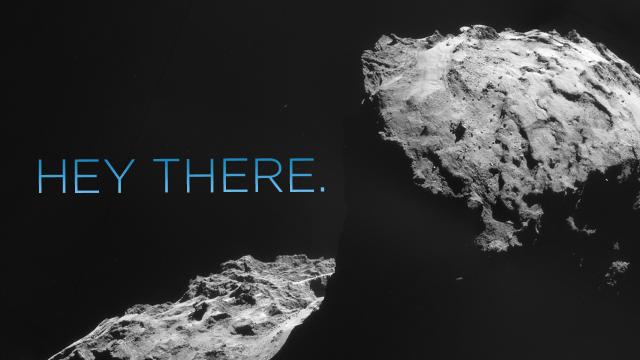Over 10 years ago, the Rosetta spacecraft left Earth to begin a long, lonely journey toward a ball of ice and rock. That six billion kilometre trek finally ended today, capped off with a nail-biting finale where Rosetta’s washing-machine-sized lander, Philae, became the first thing we humans have ever landed on a comet.
Rosetta’s target was Comet 67P/Churyumov-Gerasimenko, a lumpy ball whose orbit loops between Jupiter and Earth. There’s no way to get there in one straight shot, so Rosetta took a long, circuitous path, with four planetary flybys that gave it gravity assists.
The last portion of the journey, where Rosetta orbited Comet 67P itself and let go of its lander Philae, was the most complicated and perilous, threatening to undo all the past decade of careful planning. With both the spacecraft and the comet moving at high speeds, the tiniest error could make Philae miss its landing site. And once Philae was ejected from Rosetta, it was in free fall for seven hours, the so-called “seven hours of terror”. A thruster system to push the lander down wasn’t working, so Philae was supposed to use its harpoons to screw itself into the comet. (Update: With further analysis, it looks like the harpoons didn’t fire after all. The team is considering whether to refire them.) If Philae had landed on too steep of a surface, it would have fallen over with no way to get up.

Picture: Photo of the comet taken by Philae’s camera during descent, via ESA.
So why did we spend all this trouble to study a barren piece of rock and ice? Only to answer a question as fundamental as the origin of our solar system. Before the sun and planets formed, our solar system was a cloud of gas and dust called “pre-solar nebulae.” Comets are a sort of preserved pre-solar nebulae, a time machine into the early solar system. Philae is equipped with a bevy of instruments to help it study the makeup of Comet 67P’s ice and rocks.
The mission from here is slated to last until August 2015, when the comet reaches its closest point to the Sun. Philae will be there as Comet 67P slowly melts into the streak we think of when we think of comets. It’s the end of one journey, and the beginning of another.
A simulation of the Philae landing. It pretty much went according to plan!
